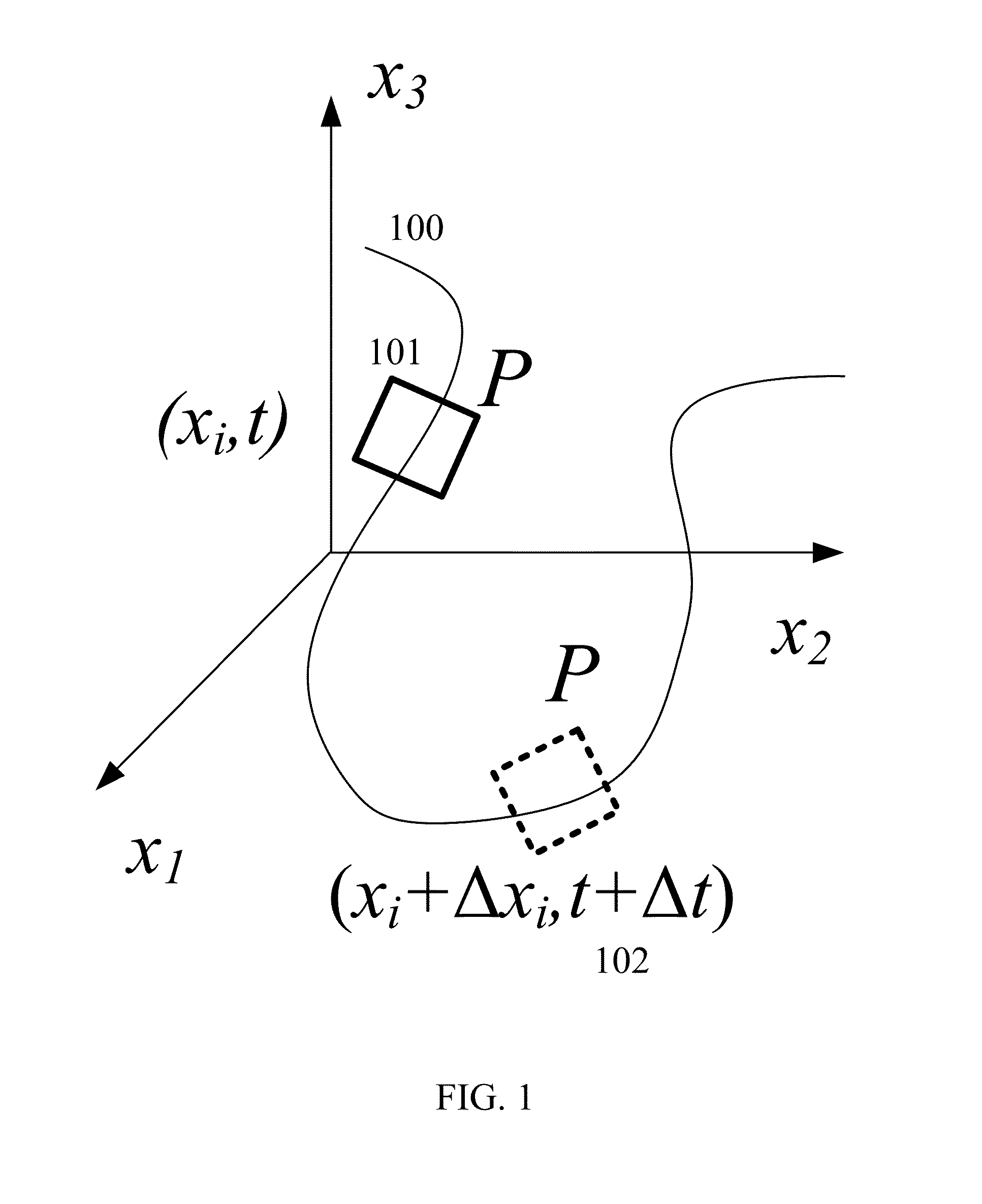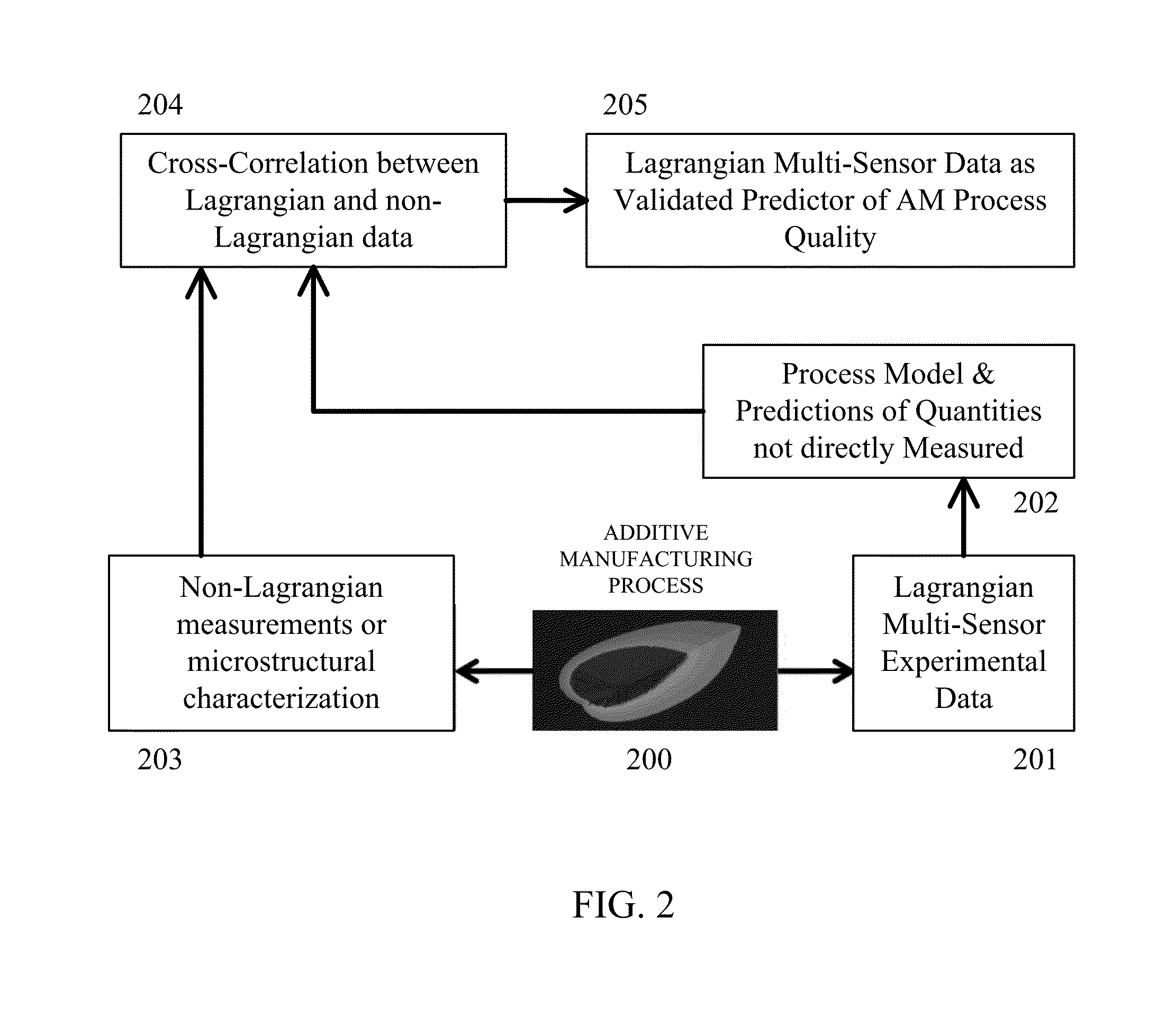Multi-sensor quality inference and control for additive manufacturing processes
a technology of additive manufacturing and quality inference, applied in the direction of additive manufacturing process, electric programme control, program control, etc., can solve the problems of limited established process for determining the quality of a resulting part manufactured in this way, difficult to avoid at least slight variations in the size and temperature of the weld, and difficult to avoid obvious reasons for testing. , to achieve the effect of high heating element travel ra
- Summary
- Abstract
- Description
- Claims
- Application Information
AI Technical Summary
Benefits of technology
Problems solved by technology
Method used
Image
Examples
Embodiment Construction
[0038]In any process in which heat and mass are being transported, it is possible to formulate the fundamental governing equations for the process in one of two reference frames: Eulerian or Lagrangian. A Eulerian frame of reference specifies quantities associated with any transport phenomenon by looking at values associated with specific points in space at given intervals in time. Therefore the point grid in space is fixed, and the medium “flows” through this grid. This is analogous to sitting on a riverbank and watching the river go by. A Lagrangian frame of reference looks at physical quantities associated with the transport phenomenon along lines of flow in the flowfield or in the medium itself, i.e. “moving with” the transport phenomenon. This can be thought of as analogous to sitting in a boat and observing the river as you are moving with the flow of the river. This can be schematically described as shown in FIG. 1. The specific line of flow 100 is a path along which specific...
PUM
| Property | Measurement | Unit |
|---|---|---|
| Temperature | aaaaa | aaaaa |
| Melting point | aaaaa | aaaaa |
| Heat | aaaaa | aaaaa |
Abstract
Description
Claims
Application Information
 Login to View More
Login to View More - R&D
- Intellectual Property
- Life Sciences
- Materials
- Tech Scout
- Unparalleled Data Quality
- Higher Quality Content
- 60% Fewer Hallucinations
Browse by: Latest US Patents, China's latest patents, Technical Efficacy Thesaurus, Application Domain, Technology Topic, Popular Technical Reports.
© 2025 PatSnap. All rights reserved.Legal|Privacy policy|Modern Slavery Act Transparency Statement|Sitemap|About US| Contact US: help@patsnap.com



